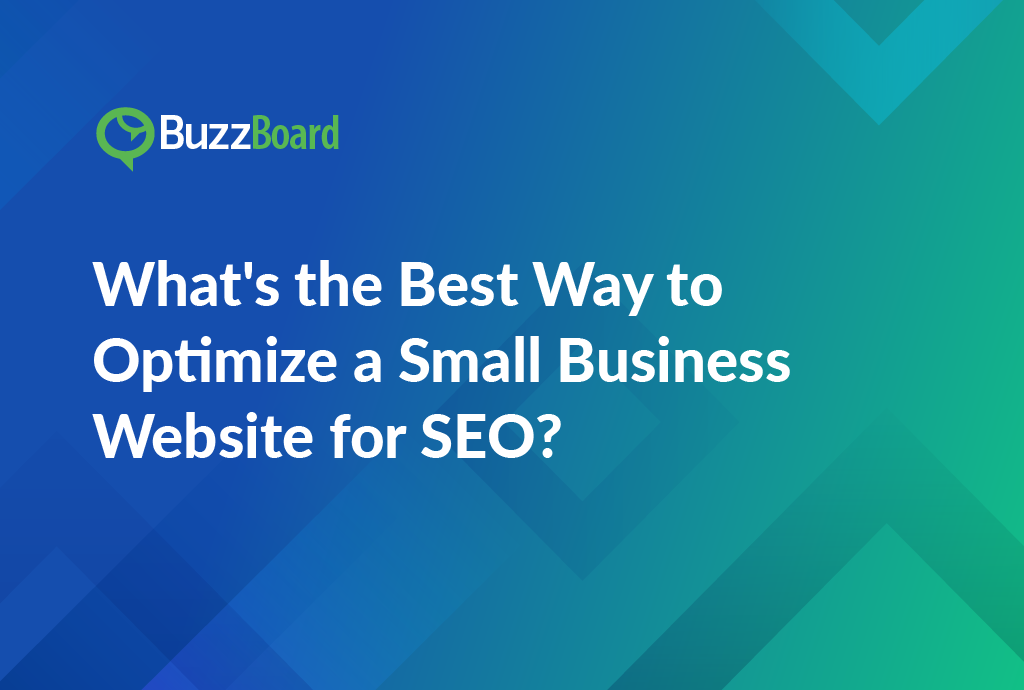What’s the best way to optimize a small business website for SEO? To improve your website’s visibility and drive more traffic, focus on these key areas: keyword research, on-page optimization, high-quality content, mobile-friendliness, and local SEO. Conduct thorough keyword research to identify relevant terms, and incorporate them naturally into your website’s content. Ensure your website is optimized for search engines by using header tags, meta descriptions, and optimizing images. Create high-quality, engaging content that provides value to your audience. Make sure your website is mobile-friendly and loads quickly, as this is now a key ranking factor. Finally, if you have a physical location, optimize your website for local SEO by including your business’s name, address, and phone number (NAP) consistently across the web and creating content that targets your local audience.
Deciphering the Basics of SEO and Its Significance for a Small Business Website
Decoding the realm of Search Engine Optimization (SEO) is a crucial element in bolstering a small business’s online presence. Essentially, SEO is a strategic plan designed to optimize a website for better visibility and higher rankings in search engines. Through optimization, businesses can expand their reach, increase organic web traffic, and establish themselves as authorities in their industries.
In many ways, SEO acts as the backstage manager of a well-performing website and successful search engine marketing. Adequately applied, it can transform your website from a virtual placeholder to a dynamic sales driver. For small business websites, this leverage can form the cornerstone of a potentially lucrative digital empire.
A well-designed and optimized website is no longer a luxury, but a necessity for small businesses to thrive. Search Engine Optimization (SEO) is a marathon, not a sprint, requiring a strategic blend of art and science to outmaneuver the competition. To succeed, small businesses must adopt a multifaceted approach that incorporates high-quality content, carefully selected keywords, robust site architecture, and a multitude of other factors to attract and engage their target audience.
A crucial aspect of SEO is understanding how search engines like Google rank pages. This involves staying up-to-date with the latest algorithm updates, best practices, and industry trends. By doing so, small businesses can identify opportunities to improve their website’s visibility, drive more qualified traffic, and ultimately, increase conversions.
To outsmart larger competitors, small businesses must focus on creating a unique value proposition that sets them apart from the competition. This can be achieved by developing a strong brand identity, crafting compelling content that resonates with their target audience, and leveraging social media platforms to build brand awareness.
In addition to content and branding, small businesses must also prioritize technical SEO. This includes ensuring website speed, mobile-friendliness, and security are all up to par. A slow-loading website, for instance, can lead to a significant decrease in search engine rankings and user engagement. Similarly, a website that is not optimized for mobile devices can result in a poor user experience and decreased conversions.
Another critical aspect of SEO is site architecture. A well-structured website with clear navigation, internal linking, and a logical hierarchy can help search engines understand the content and relevance of a website. This, in turn, can improve search engine rankings and drive more targeted traffic to the website.
Furthermore, small businesses must also focus on building high-quality backlinks from authoritative sources. This can be achieved through guest blogging, content partnerships, and other forms of collaborative marketing. By doing so, small businesses can increase their website’s authority, drive more referral traffic, and improve their search engine rankings.
Enhancing a small business’s digital presence is no longer an option, but a necessity in a digitized and fiercely competitive market. By understanding and capitalizing on the mechanics of SEO, small businesses can outsmart larger competitors, secure their portion of the digital marketplace, and drive long-term growth and success.
Key Strategies to Optimize a Small Business Website for SEO
As a sales professional at a digital marketing agency specializing in serving local and small businesses, developing a deep understanding of the process of optimizing a website for search engine optimization (SEO) is a vital skill to possess. While you may not directly handle the optimization tasks, having this knowledge enables you to effectively communicate your solutions to prospective clients, ultimately driving business growth and success.
Small businesses can significantly benefit from search engine marketing, with SEO being a fundamental component of it. To establish a notable presence on search engine results pages (SERPs), a website must undergo intensive optimization through various strategies. This is where your expertise as a sales professional comes into play, as you can educate clients on the importance of SEO and the benefits it can bring to their online presence.
One crucial aspect of website optimization is website design. A clear, well-structured website design not only enhances the user experience (UX) but also plays a significant role in how search engines rank websites. A user-friendly website with a logical navigation structure, fast loading speed, and visually appealing design can improve the overall user experience, which is a key factor in search engine ranking algorithms.
Optimization also involves the strategic use of the right keywords in content and meta tags. The chosen keywords should accurately reflect what potential customers might type into search engine search bars when seeking the products or services offered by the small business. This ensures that the website appears in search results for relevant queries, increasing the chances of attracting targeted traffic.
Creating high-quality content that provides value to website visitors is another effective strategy for optimization. Such content can not only boost the website’s interface with search engines but also magnetize potential customers. By producing informative, engaging, and relevant content, small businesses can establish themselves as authorities in their industry, build trust with their audience, and drive conversions.
It’s essential to remember that the ultimate goal of SEO is not only about increasing website visibility but also about enriching the visitor’s experience. That’s why optimization should be paired with website design. By combining these two elements, small businesses can create a seamless online presence that not only attracts visitors but also keeps them engaged and converted.
As a sales professional, your role is to educate clients on the importance of SEO and the benefits it can bring to their online presence. By understanding the process of optimizing a website for SEO, you can effectively communicate the value of SEO to clients and help them achieve their online marketing goals.
The Role of Website Design in Search Engine Optimization
Website design plays a crucial role in search engine optimization (SEO), a vital component of search engine marketing. For small businesses to optimize their websites for SEO, they must focus on building a website that not only looks attractive but also provides a seamless user experience and is optimized for search engines. A well-designed website can significantly impact a business’s online presence, visibility, and ultimately, its ability to attract and retain customers.
The structure and design of a website can have a direct impact on its SEO performance. For instance, Google rewards websites that load quickly and are easy to navigate, as these sites enhance the user experience. A website that is slow to load or difficult to navigate can lead to a high bounce rate, which can negatively impact its search engine rankings. Moreover, strategic keyword placement, mobile-friendly design, and providing useful, relevant content are all essential elements of website optimization.
Incorporating SEO best practices during the website design process is particularly vital for small businesses. These businesses often have limited marketing budgets and must compete with larger corporations that have significantly more resources at their disposal. Proper SEO execution can help small businesses level the playing field and gain an equal footing in terms of online presence and visibility.
Effective website design goes beyond mere aesthetic appeal. It involves incorporating features designed to increase visibility on search engines, thereby boosting traffic and, subsequently, potential business opportunities. This includes optimizing website elements such as meta tags, header tags, and image alt tags, as well as ensuring that the website is mobile-friendly and has a responsive design.
In addition to website design, small businesses should also consider implementing extra strategies to optimize their online presence. This may include content marketing, social media marketing, and pay-per-click advertising. Content marketing involves creating high-quality, relevant, and valuable content that attracts and engages target audiences. Social media marketing involves leveraging social media platforms to build brand awareness, engage with customers, and drive website traffic. Pay-per-click advertising involves creating targeted ads that appear on search engines and other websites, driving traffic and generating leads.
A comprehensive digital marketing strategy should also include ongoing website maintenance and optimization. This may involve regularly updating website content, monitoring website analytics, and making adjustments to the website design and structure as needed. By incorporating SEO best practices into the website design process and implementing a comprehensive digital marketing strategy, small businesses can improve their online presence, drive more traffic to their website, and ultimately, increase their chances of success.
Some key takeaways for small businesses looking to optimize their website for SEO include:
- Focus on building a website that is both attractive and user-friendly
- Incorporate strategic keyword placement, mobile-friendly design, and relevant content
- Ensure that the website loads quickly and is easy to navigate
- Implement SEO best practices during the website design process
- Consider implementing extra strategies such as content marketing, social media marketing, and pay-per-click advertising
- Regularly update website content and monitor website analytics to ensure ongoing optimization and improvement.
By following these best practices and incorporating SEO into their website design, small businesses can improve their online presence, drive more traffic to their website, and ultimately, increase their chances of success.
Case Studies Showcasing Successful Optimization of Small Business Websites
Optimizing a small business website for SEO is a crucial step in establishing a strong online presence and driving success in today’s competitive digital landscape. Search Engine Optimization (SEO) is a vital component of search engine marketing, designed to harness the power of Google’s staggering 5.6 billion daily searches. By exploiting SEO strategies proficiently, small businesses can reap a significant return on investment (ROI) and gain a competitive edge over larger competitors.
A case study from Moz provides a compelling example of the impact of SEO on small business success. A local bakery, struggling with website design and online visibility, invested in SEO and witnessed remarkable results. Following a comprehensive audit and the implementation of targeted optimization strategies, the bakery saw a 400% increase in organic search traffic and a significant boost in rankings for localized keywords. This, in turn, led to a substantial increase in sales, demonstrating the direct correlation between SEO and business growth.
Another example illustrates the transformative power of SEO for small businesses. A small landscaping company, previously overlooked in search engine results due to larger competitors, wisely decided to optimize their website. By conducting thorough keyword research, optimizing their website design for SEO, and running a targeted backlink campaign, the company was able to rank prominently for their targeted keywords within their region. This led to a significant surge in customer inquiries and bookings, showcasing the potential for SEO to drive business growth and revenue.
These success stories demonstrate that a well-optimized small business website can establish a strong digital presence, attract more customers, and drive sales. However, SEO is not a one-time project; it is an ongoing process that requires continuous refinement and adaptation to ensure maximum ROI.
To achieve optimal SEO results, small businesses must be willing to invest time and resources in ongoing optimization efforts. This includes:
- Regularly monitoring website analytics to track performance and identify areas for improvement.
- Conducting keyword research to stay ahead of the competition and adapt to changing search trends.
- Optimizing website content and structure to ensure search engines can easily crawl and index pages.
- Building high-quality backlinks from authoritative sources to increase website authority and credibility.
- Staying up-to-date with the latest SEO best practices and algorithm updates to avoid penalties and maintain rankings.
By embracing SEO as an ongoing process and investing in ongoing optimization efforts, small businesses can establish a strong online presence, drive more traffic and conversions, and ultimately achieve long-term success in the competitive digital landscape.
The Challenges and Potential Advantages of SEO for Small Business Websites
Small businesses often face significant challenges when it comes to navigating the complexities of search engine marketing, particularly in the realm of search engine optimization (SEO). This is because SEO involves a deep understanding of the intricate workings of search engines, as well as the critical role that website design and optimization play in enhancing visibility.
One of the primary challenges that small businesses face when it comes to optimizing their website for SEO is the fact that it is not a one-time task. Rather, SEO demands persistent attention and updates to ensure that a website remains relevant and visible to search engines. This can be a significant challenge for small businesses, which often have limited resources and may struggle to dedicate the necessary time and effort to maintaining a strong SEO strategy.
Another challenge that small businesses may face is the process of finding the right keywords, creating valuable and relevant content, and establishing authoritative backlinks. This can be a daunting task, particularly for businesses that are new to SEO or lack the necessary expertise. Finding the right keywords, for example, requires a deep understanding of the target audience and the language that they use to search for products or services. Creating valuable and relevant content, on the other hand, requires a strong understanding of the business and its offerings, as well as the ability to craft compelling and engaging copy.
Despite these challenges, the benefits of integrating SEO into a small business website cannot be overstated. A well-designed website, bolstered by effective optimization strategies, can amplify online visibility and drive more traffic to the site. This, in turn, can potentially convert into customers, which is critical for small businesses that rely on online sales and revenue.
Importantly, SEO is not just about increasing the volume of visits to a website. Rather, it is also about improving the quality of those visits. By targeting specific keywords relevant to the business, small businesses can attract a more likely-to-convert audience, which can lead to increased sales and revenue.
In today’s digital age, where most customers turn to online research before making a purchase, maintaining a strong online presence is no longer a choice but a necessity for small businesses. Therefore, weaving SEO into the broader digital marketing plan is crucial for small businesses that want to stay competitive and attract new customers.
Some of the key benefits of integrating SEO into a small business website include:
- Increased online visibility and traffic
- Improved search engine rankings and credibility
- Targeted traffic and increased conversions
- Enhanced brand awareness and reputation
- Cost-effective marketing strategy
To overcome the challenges of SEO and achieve these benefits, small businesses can take several steps. These include:
- Conducting keyword research to identify relevant and high-traffic keywords
- Creating high-quality and relevant content that targets those keywords
- Optimizing website design and structure for search engines
- Building authoritative backlinks from other reputable websites
- Monitoring and adjusting SEO strategies regularly to ensure ongoing success
By following these steps and integrating SEO into their digital marketing plan, small businesses can improve their online visibility, drive more traffic to their website, and ultimately increase sales and revenue.
Conclusion
In conclusion, optimizing a small business website for SEO is a crucial step in increasing its online visibility and driving more traffic and conversions. By following the strategies outlined in this article, small business owners can improve their website’s search engine ranking, increase its credibility and trustworthiness, and ultimately drive more sales and revenue.
Remember to conduct thorough keyword research to identify relevant terms, optimize your website’s on-page elements, create high-quality and engaging content, ensure mobile-friendliness, and optimize for local SEO if applicable. By implementing these strategies, you’ll be well on your way to creating a website that attracts and engages your target audience, and ultimately drives business growth.
Don’t underestimate the power of SEO for your small business. With the right strategies and techniques, you can level the playing field with larger competitors and establish your business as a leader in your industry. So, take the first step today and start optimizing your website for SEO. Your business will thank you!








